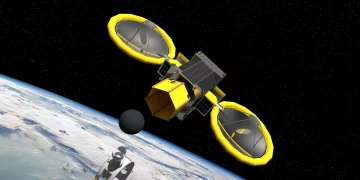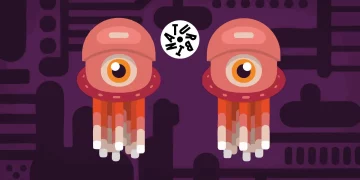The Technical Leap: Starlink 3.0 and Firewall Evasion
By 2025, SpaceX’s Starlink satellite internet has evolved into its third major iteration—Starlink 3.0—a network of thousands of low Earth orbit satellites designed to provide high-speed broadband globally. The key breakthrough distinguishing this generation lies in its near-immunity to terrestrial censorship mechanisms. Unlike traditional internet providers tethered to physical infrastructure vulnerable to state-controlled firewalls and surveillance, Starlink beams signals directly from orbit, bypassing centralized ground stations that authoritarian regimes can easily control or shut down. The network’s decentralized architecture and encrypted communication protocols allow users in highly censored regions to access the open web more freely than ever before. Experimental deployments have demonstrated that Starlink 3.0 users inside countries with heavy internet restrictions experience significantly less throttling and filtering compared to legacy ISPs.
This capability is not merely a technological novelty but a game-changer for internet freedom worldwide. Countries known for draconian censorship—China, Iran, Russia, and parts of the Middle East—have watched Starlink’s deployment with suspicion. The ability to circumvent the Great Firewall or national deep packet inspection systems threatens the very control governments maintain over information flows. Starlink’s encrypted, space-based signals are difficult to block without cutting off vast swaths of internet access indiscriminately. This creates a new dynamic where state censors face the dilemma of either tolerating an unfiltered digital sphere or triggering widespread internet blackouts that disrupt commerce and daily life.
Geopolitical Flashpoints: Iranian Hackers Target Starlink Ground Stations
The geopolitical implications of Starlink’s censorship resistance are already manifesting in high-stakes cyber warfare. In early 2025, a coordinated hacking campaign by Iranian cyber operatives targeted Starlink ground station infrastructure, aiming to disrupt service and reclaim information control. Ground stations, while fewer in number than traditional ISP nodes, are critical for bridging satellite signals to terrestrial networks. The attacks sought to disable or compromise these stations to sever Starlink’s connectivity within Iran.
While the assault did cause temporary outages in several regions, SpaceX’s rapid response teams fortified ground station cybersecurity and deployed backup satellite routing to maintain continuity. The incident marked a new frontier in digital conflict—satellite internet infrastructure as a contested battlefield. Unlike traditional cyberattacks targeting websites or data centers, these attempts threatened the physical nodes essential to global internet access, highlighting vulnerabilities even in highly advanced systems.
This event also underscored how authoritarian regimes are adapting their cyber arsenals to tackle satellite internet’s growing influence. Iran’s government publicly condemned Starlink as a tool of foreign interference and information warfare, while simultaneously cracking down harder on domestic satellite dish ownership and usage. Neighboring countries monitored the escalating digital arms race nervously, fearing spillover or unintended outages. The episode demonstrated that while Starlink 3.0 offers unprecedented access, it also introduces new security and diplomatic challenges that could reshape global internet governance.
The Underground Economy: Dark Web ‘Starlink Crack’ Packages
As Starlink’s censorship-resistant service expands, an underground ecosystem has flourished to provide illicit access in places where owning or subscribing to Starlink is forbidden or prohibitively expensive. Dark web forums now list “Starlink crack” packages—subscription sharing schemes or hardware hacking services enabling users to connect anonymously and inexpensively. These offerings often include modified user terminals paired with VPN and anonymization tools to evade detection by local authorities.
Such underground markets highlight the unmet demand for uncensored internet among populations living under strict surveillance. For many, purchasing a “crack” package is the only viable option to join the global digital conversation, access banned social media platforms, or organize dissent. While these services are frequently advertised alongside illicit goods, they represent a digital lifeline for communities desperate for information freedom.

The rise of these markets also complicates SpaceX’s efforts to regulate its network usage. Satellite internet was initially intended for licensed consumers and underserved rural areas. Now, managing unauthorized access requires balancing user privacy with compliance obligations. Some experts warn that unchecked distribution of “cracked” Starlink terminals could provoke harsher government crackdowns, leading to seizures, arrests, or forced satellite jamming in contested airspaces.
Despite these risks, the demand shows no sign of waning. Activists champion these underground networks as modern tools of resistance, while governments scramble to devise countermeasures that don’t alienate legitimate users. The tension between democratizing internet access and controlling information flow lies at the heart of Starlink’s revolutionary yet fraught role in 2025.
A Global Internet Reimagined: Opportunities and Challenges Ahead
Starlink 3.0’s ability to sidestep censorship holds transformative potential for societies where internet access has long been a privilege rather than a right. By circumventing state-controlled firewalls, satellite internet empowers individuals with unfiltered news, educational resources, and global connections. It enables journalists to report freely, activists to mobilize securely, and entrepreneurs to tap international markets previously out of reach.
However, the technology’s disruptive nature also invites new risks. Cyberattacks against ground infrastructure could escalate, diplomatic tensions over internet sovereignty may intensify, and governments might retaliate with more aggressive censorship tactics, including satellite signal jamming or legislation criminalizing satellite usage. The underground “crack” economy, while essential for some, raises questions about network security and legal enforcement in space-based internet provision.
As 2025 unfolds, Starlink symbolizes both the promise and peril of a more connected world. It challenges traditional power structures by democratizing access to information, yet it also provokes struggles over control and privacy that will define the future digital landscape. Whether this satellite internet revolution leads to lasting internet freedom or a new battleground for geopolitical conflict depends on how governments, corporations, and civil society navigate these complex tensions.
The story of Starlink is far from over. In the years ahead, its orbiting constellation may become the most potent instrument for circumventing censorship—or the most contested frontier in a global fight over who owns the internet.


















































Discussion about this post